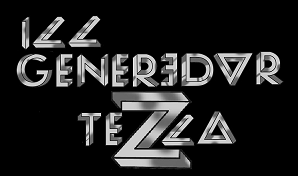Ill Generedur Tezla
| This article is a proposal
|
Ill Generedur Tezla (colloquialy referred internationally as Tezla Generator or The Generator and often stylicized as Ill Generedur TeZla or TeZla Generator) was the most notable Kemrese zone rock band.
Personnel
Pedr Iosep Hewlin: Lead vocals, piano and, sometimes, accoustic and electric guitars and harpsichord. Undisputed leader of the band and its primary lyricist.
Ioan ffeil Donal: flute, saxofone and, sometimes, cornet.
Hyw Rhoberth Bendith: keyboards, usually harmonium but sometimes synthesizer, orchestron and backing vocals.
Cristian Ffaur: drums and percussion.
Nigol Prefder: double bass (played in pizzicato) and backing vocals. Sometimes electric guitar.
Dewidd Cryg: electric violin.
The band always lacked of a truly skilled electric guitar player. Unlike many other bands guitar solos were rare in Ill Generedur Tezla music. Guitarist Rhoberth Ffreidd (from Tyrean Yesman) participated as a guest musician in several albums providing decent guitar solos.
History
Formation
Pedr Hewlin and Hyw Bendith were friends since childhood in their hometown Manfyc. When he was young, Hewlin wrote short stories and poetry and was very interested in science fiction and dystopian novels. He learned to play piano and had a deaf brother. Since his childhood, he became fluent in Brithenig sign language.
Bendith came from a family of musical background. He learned to play piano as a child and later played pipe organ in a local church. During their teenagehood they had penpals in the NAL, some of those sent them records from zone rock bands. As a joke, sometimes, Bendith played Los Muartos Agrayeçiyos’ tunes at the church. Apart few younger ones no one else there knew what was newborn Zone rock, these laughted in silence…
They both joined Manfyc University in 1967 where they met several zonees and had access to more Zone rock records so as to mind altering substances. There they met a zonee called Cristian Ffaur, who played drums in a student band.
All three went to the 1968 Mona Island Rock Festival, in Kemr, the first large zonee event held in Europe. They met there Ioan ffeil Donal who played saxophone in a Jass band from Castreleon. On their return from the festival Hewlin, Bendith and Ffaur created a band which often changed name and played at Manfyc University and local zonee scene. Meanwhile Ioan ffeil Donal, who always kept contact with the other three, joined The Tyrean Yesmen (later known as Tyrean Yesman) in 1973 at a time this band was already one of the most important Zone rock acts in the FK. Donal’s saxophones and flutes became then a hallmark of the band’s sound.
Hewlin, Bendith and Ffaur tried their luck and started to send demos to several record labels during 1973 and 1974, no success achieved. Lyrics were mostly writen by Hewlin and reflected his taste about science fiction. In 1975 Donal left Tyrean Yesman due to disagreements with the leader of the band, Peter Seinfeld.
In a way of invitation Hewlin sent Donal demos telling him something was missing about the band’s sound. Impressed by Hewlin’s lyrics and voice Donal promptly accepted the invitation to join the yet nameless new band. Needing a name the members made a list of possible names. After watching a TV documentary about Nikola Tesla on BBC-Kemr Ffaur sugested Ill Generedur Tesla (The Tesla Generator) as Tesla had started his sudies about electricity one hundred years ago (in 1875). All bandmates aproved but Hewlin sugested giving a zoneer feel replacing S by a Z. Double bassist Nigol Prefder, from another local jass band, joined Ill Generedur Tezla meanwhile after several auditions.
Signing to Gramophone Records
Having Donal in the band opened many doors. New demos were recorded now with a more jass influenced sound from Donal’s saxophones. Unlike before several record labels got interested in Ill Generedur Tezla in a time Zone rock was progressively becoming a major musical trend. Among the possibilities the band chosen Gramophone Records, a subsidiary of EMI (English Music Industries) which already had in its portfolio Exodus.
On that year the band released its self-titled debut album, not yet having a true own distinctive style to be identified although having a certain folk feel. Sales were disappointing and having a former member from a frontline Zone rock band such as Tyrean Yesman promptly attracted attention from the music press. Critics were far from positive, Ill Generedur Tezla was considered as a mix of several already existing bands according to influential Skweee! magazine which also stated Pedr Hewlin murmurs, growls, croons, shrieks and shouts but definetely doesn’t sing. Wonder if he can sing, anyway. The band toured accross the FK during second half 1975.
After finishing touring for their first album the band was in financial hardship due to the album’s disappointing sales, unfavorable critical reception and not large enough attendance at their shows. Gramophone Records considered dropping Ill Generedur Tezla but granted the recording of a second album after negotiations.
Llo Man cal Chanhant (The Hands that Sing) was released during 1976. Protesting against criticism about Hewlin’s voice and his style of singing the album was fully instrumental. Even so each composition had lyrics and even Hewlin was listed as vocalist. In fact each instrumental was a song, Hewlin sung in Brithenig sign language each one (as later seen in live shows). Such is somehow comparable to famous 5 Minutes and 55 Seconds by Pink Frojt. With this album the band made a closer approach to jass combined with liturgical music influences from Bendith’s harmonium. Sleeve artwork was made for the first time by HipnoiZ. Once again both public and critics weren’t convinced and after a tour in half empty show rooms accross FK and continuing financial troubles Hewlin disbanded Ill Generedur Tezla later that year.
Rebirth
After disbanding Hewlin composed lots of material hoping to return someday. Early 1978 he invited his former bandmates for a returning of Ill Generedur Tezla. By this time Zone rock was already a powerful and well established trend in music industry with some bands selling millions of records worldwide.
All members agreed and Gramophone Records supported the idea of bringing Ill Generedur Tezla back to life. The band signed a contract for the next five years, renewable yearly after that. That year Dors a Wid (Back to Life) was released taking everyone by surprise. Tracks were now longer and grew in complexity, keeping the mix of jass and liturgical music influences. The record was well received by the critics and quickly outsold the two previous albums. HipnoiZ designed once again the record cover so as the new logo used by the band since then in most of their records. During 1978 Ill Generedur Tezla made the opening to Tyrean Yesman concerts in the FK during their world tour. Also several performances footages passed in music TV programmes in Telefisiwn Comroig and BBC-England giving them a wider visibility. Hewlin started to use papier-mâché masks during his performances illustrating his science fiction songs. Their most creative and acclaimed period had started.
Next year Lla Enery (The Energy) album was released. Same style as previous album was kept and critics were in general quite positive. To promote the album Ill Generedur Tezla went on their own European tour performing concerts in the FK, France, Scandinavian Realm, Batavia and the Italies. The band received more audience in latin speaking countries.
Concept albums
Following the trend among zone rock bands of making concept albums Ill Generedur Tezla released early 1980 Lla Giwdad di Gwidr (The City of Glass). It was based on Yevgeny Zamyatin's dystopian novel We and received lots of positive critics. some even considered it as one of concept albums of the year. Until then it was considered the darkest (in terms of atmosphere) zone rock record ever.
Ill Generedur Tezla went then on their first (and only) world tour passing at the Canterbury Rock Festival (August 1980), the largest zonee event ever. There both Donal and Bendith participated in the Lead Aeroplane tribute band The AeroplaneZ as flautist and keyboardist respectively.
A second concept album was released during 1981. Puinsadcrimer was Hewlin’s story set in Seoirse Fferreir’s 1994 dystopian universe. It was even darker than Lla Ciwdad di Gwidr and possibly one of the most ambitious concept albums ever. Most of the album was sung in Fferreir’s conlang Newparol, telling the story of a man who found the ideas of freedom and free thinking by secretly learning extinct languages (in this case Brithenig) which had words for non-existing libertarian concepts in Newparol. The album was acclaimed as an achievement of Zone rock by the critics who also considered Ill Generedur Tezla as one of the most prominent Zone rock bands in the world.
Tezla
In 1982 the band was invited by BBC-Kemr to make the soundtrack for that year’s season of the popular science fiction series Ill Peleirin. At same time the band was also working in their album to be released in 1983. But the band was breaking apart. While Bendith criticized the financial health of the band and left even before recording started Donal participated but had to leave due to his increasing use of drugs which was inhibbiting his ability to work and collaborate with the others. Hewlin replaced Bendith on keyboards while Donal was replaced by Dewidd Cryg (another former Tyrean Yesman member) replacing wind instruments sound by electric violin. This considerably modified the band’s sound which was rather polemic among fans.
Recordings for both albums were gathered in a single record which was released late 1982, after several delays. Instead of A and B sides, Ill Tarfin d’ill Temp/Dibos ill Dilyw (The End of Time/After the Flood) had each side treated as a distinct album. In the end Ill Tarfin d’ill Temp side wasn’t used as soundtrack to Ill Peleirin as BBC-Kemr considered the music too dark, although many consider the TV network was pressured by conservative shocked by the wide use of drugs by all members of the band.
The band’s name was shortened to just Tezla (a simpler name for matters of marketing as sugested by Gramophone Records) and changed logo. Later Hewlin explained the name change had another meaning: Tezla was incomplete Ill Generedur Tezla. Ill Generedur would be incomplete without Hyu and Ioan, according to his own words. The album received mixed critics and sold badly.
Before leaving the band disappointed by the sales results so as for always feeling as an outsider to the band Cryg participated in the recording of few themes for the next album, released during mid-1983. Ill Diwrn Present (The Present Day) had Tezla mostly as a trio, thus the cover with portraits of Hewlin, Prefder and Ffaur. Several Kemrese musicians participated as guests. It received mixed critics and was another sales flop. After that they went to their second hiatus by late 1983. Surprisingly Gramophone Records renewed the contract with them even if the band became dormant.
Final years
By 1985 Donal had recovered from his strong drug addiction. Once again Hewlin called back his bandmates for the second return of Ill Generedur Tezla. Donal accepted but Bendith initially wasn’t interested. At the end he was finally convinced after reading articles from music magazines from France and the Italies which told local audiences were anxious for a possible return.
That year double album Cinc (Five, titled this way because the band was once again a quintet) was released, once again receiving mixed critics in a time Zone rock movement was starting to fade away and losing the critics’ sympathy. It was their last record under Gramophone Records label which was annoyed by consecutive sales flops.
Late 1985 the band created their own label and started to release the next albums independently from major record companies. It was an attempt to return to the origins of zone rock, when artists were independent from major record labels. Under their own label they released Lla Geidd di lla Gwer (The Joy of War) early 1986. It was a concept album inspired by recent or ongoing major military conflicts (the Persia-Iraaq War, the Bornei Filipinas War and the Russian invasion to the Moghul National Realm). It was followed next year by the concept album Ill Paes di lla Noeth (The Country of the Night), about the mines closures in Kemr during that period and how it affected the miners and their families. Both were composed by complex twenty minutes long tracks. Despite critics considered the two albums as good and ambitious efforts to revitalize the band they also considered both records as an anachronism. Music market was no longer interested in such long musical divagations. So 1975 stated Skweee!.
Twelveth and final album was released in 1989. Llo Diwrn Passad (The Past Days) was a collection of outtakes and re-recordings of songs from previous albums, especially from Tezla period when Donal and Bendith were absent. No tour was made to promote the album and the band self-suspended in 1990. Members pursued their solo careers (always keeping contact with each other) and some recorded as guests in other’s records. They re-united several times being the most famous reunion in 1994 where they fully performed Puinsadcrimer for the first time.
Legacy
Often underrated and commercially unsuccessful, apart from the 1978-82 period, Ill Generedur Tezla was later recognized as one the most influential zone rock bands. Several Nu metal bands and artists were influenced by Ill Generedur Tezla, notably Johnathan ffeil Dewidd (vocalist of Maize) who recognized Pedr Hewlin as one of his most important influences, so as the Assyrian-Lebanese immigrant band in the NAL Syndrome of a Down.
Hewlin, Donal and Bendith are widely recognized as some of the most important vocalists/lyircists, wind instrument players and keyboardists, respectively, among the zone rock scene.
Discography
Ill Generedur Tezla's discography consists in twelve studio albums and one live album.
| Year | Record cover | Title | Footnotes |
|---|---|---|---|
| 1975 | 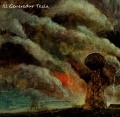
|
Ill Generedur Tezla | First studio album. |
| 1976 | 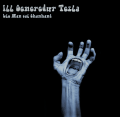
|
Llo Man cal Chanhant | Second studio album. First with HipnoiZ artwork. |
| 1978 | 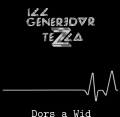
|
Dors a Wid | Third studio album. Also their bestselling record. Presenting their new logo. |
| 1979 | 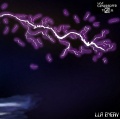
|
Lla Enery | Fourth studio album. |
| 1980 | 
|
Lla Giwdad di Gwidr | Fifth studio album and their first concept album. |
| 1981 | 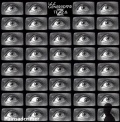
|
Puinsadcrimer | Sixth studio album. Double record concept album. |
| 1981 | File:Need picture | Yn Noeth in Manfyc | First and only official live album. |
| 1982 | File:Need picture | Ill Tarfin d’ill Temp/Dibos ill Dilyw | Seventh studio album. Bendith and Donal left. Cryg joins. |
| 1983 | 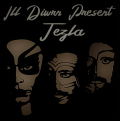
|
Ill Diwrn Present | Eigth studio album. |
| 1985 | File:Need picture | Cinc | Ninth studio album. Double record album. Bendith and Donal rejoined. |
| 1986 | 
|
Lla Geidd di lla Gwer | Tenth studio album. Concept album. |
| 1987 | 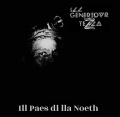
|
Ill Paes di lla Noeth | Eleventh studio album. Concept album. |
| 1989 | File:Need picture | Llo Diwrn Passad | Twelveth and final studio album. |


